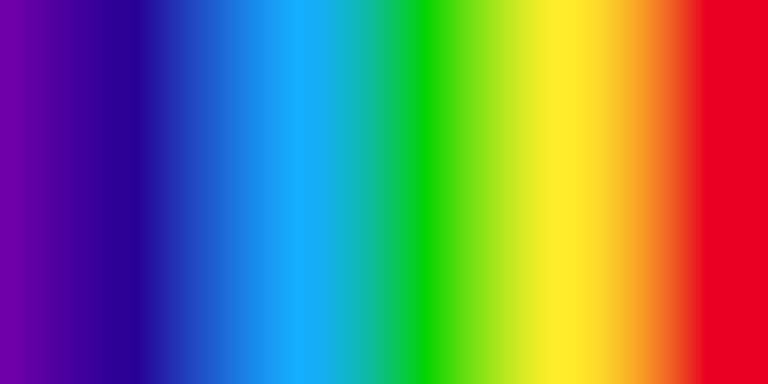
Guide to Color Terminology
Confused about color terminology? We define color terms for TV and display technology in our glossary. Learn about color gamut, volume, luminance, and more.
Color performance is critical to image quality. But identifying which displays and TVs offer the best color experiences is difficult when there are so many different terms.
In this color guide and glossary, we outline commonly misunderstood color terminology. Read on for definitions and links to deeper dives.
Color gamut
Put simply, color gamut is the range of colors that a device can reproduce. We explain this in more detail in our color gamut guide.
Some things you may come across related to color gamut include:
Color space
This is a way of mapping real colors and defining the precise colors that can be seen on a display. A color space considers how the human eye perceives visible light and how many different colors can be seen.
A color space maps colors to a grid and assigns spectral absorbance values. When defining a color space, the usual reference standard is a CIELAB or CIEXYZ color space. These were specifically designed to encompass all of the colors a human can typically see.
A color space differs from a color gamut because it refers to the colors available in a color model. In contrast, a color gamut is specifically the colors that are supported by a device.
sRGB
sRGB is a standard RGB (red, green, blue) color space that HP and Microsoft created cooperatively in 1996 to use on monitors, printers, and the World Wide Web. It was subsequently standardized by the International Electrotechnical Commission (IEC) as IEC 61966-2-1:1999. sRGB is the current defined standard colorspace for the web, and it is usually the assumed colorspace for images that are neither tagged for a colorspace nor have an embedded color profile.
sRGB essentially codifies the display specifications for the computer monitors in use at that time, which greatly aided its acceptance. sRGB uses the same color primaries and white point as ITU-R BT.709 standard for HDTV, a transfer function (or gamma) compatible with the era’s CRT displays, and a viewing environment designed to match typical home and office viewing conditions.
In the CIE 1976 u’v’ chromaticity diagram, sRGB covers only 33.2% of the chromaticities.
DCI-P3
The DCI-P3 color space released in 2007 uses the same blue primary as the sRGB color space, but employs different green and red primaries.
The red primary of DCI-P3 is monochromatic 615 nm, while the green primary is a slightly more yellowish hue of green but more saturated.
DCI-P3 is 26% larger than sRGB gamut, and it covers 41.7% of the CIE 1976 chromaticity diagram.
BT 2020
ITU-R Recommendation BT 2020, or Rec 2020 for short, establishes the widest display color gamut, requiring monochromatic RGB primaries (467 nm, 532 nm, and 630 nm).
This color gamut is the widest 72% larger than sRGB and 37% larger than DCI-P3. The resulting color space covers 57.2% of CIE 1976 chromaticity diagram. Most of the thought processes behind the origin of these primaries can be found in ITU-R Recommendation BT 2246-2:2012. In summary, the UHD-TV should have a larger color gamut in order to cover the real surface colors (based on Pointer’s gamut and Standard Object Colour Spectra (SOCS) database) as much as possible using real primaries. Rec 2020 is extended for high-dynamic-range (HDR) by Rec 2100, which uses the same color primaries as Rec 2020.
The displays closest to replicating a BT 2020 color gamut use quantum dots, like Samsung’s QD-OLED technology. For more detail on color perception, visit our Colour and the Human Eye whitepaper.
HDR
High dynamic range (HDR) displays cover a broader luminance range than standard display range (SDR) products. In addition, modern HDR displays often use other techniques, such as bright highlight, to achieve higher peak-luminance levels.
Because of HDR’s wide luminance range, a new standard is required to display all the colors it’s capable of. Measuring color volume rather than a 2D chromatic range also gives a more accurate representation of the colors that can be seen.
As mentioned above, ITU-R Recommendation BT.2100, more commonly known by the abbreviations Rec. 2100 or BT.2100, introduced high-dynamic-range television (HDR-TV). Rec 2100 uses a wide color gamut (WCG) which is the same as Rec 2020.
You can explore this further in our guide to color in HDR displays.
Color volume
Color volume is the set of all available colors at all hue, saturation and brightness levels. It’s the result of a 2D color space or 2D color gamut (that represent chromaticity) combined with the dynamic range.
Defined as a three-dimensional representation that illustrates the color reproduction capacity of a display at all of its luminance levels, color volume is also an important factor for ensuring that content, particularly in HDR, is displayed in the way the producer intended.
The larger the color volume, the more accurately a display can depict a comprehensive range of colorful imagery. A larger color volume becomes increasingly important for a display with a wider range of luminance levels. That’s why it’s essential to consider how color volume interacts with other display technologies, such as HDR.
Just like there are different color standards, there are two representative color spaces for measuring color volume, such as:
ICTCP
ICTCP, ICtCp, or ITP is a color representation format specified in the Rec. ITU-BT.2100 standard that’s used as a part of the color image pipeline in video and digital photography systems for high dynamic range (HDR) and wide color gamut (WCG) imagery.
ICTCP was developed by Dolby Laboratories from the IPT color space by Ebner and Fairchild. Color volumes created in this color space include Perceptual Color Volumes by Dolby. The output of this metric is given in millions of distinguishable colors (MDC). Depending on the chosen color representation, it can relate to the number of just-noticeable differences (JND) that a display (assuming sufficient bit-depth) can produce.
CIELAB
Also known as CIE L*a*b*, this 3D color space uses three color values to measure and compare colors.
It provides useful information about the range of colors produced by a display relative to its luminance. However, it provides less information than ICTCP because it normalizes the color values to the luminance of the display white point. Thus, CIELAB loses information about overall brightness differences between displays, which is an important factor for HDR displays.
Color luminance
The human eye is a trichromatic color receptor with three cones that respond to specific spectral sensitivities. The most efficient method of creating color in a display is by using a combination of red, green and blue lights (trichromatic). In embracing color additivity, the QD-OLED delivers a state-of-the-art high white luminance without compromising overall color fidelity due to the quality of each primary color. Visit the quantum color experience blog to learn more.
CLO and WLO
CLO stands for Color Light Output. It’s also sometimes referred to as color brightness. CLO is used to measure the brightness of a device beyond white light only. CLO is the sum of the luminance of the red, green, and blue display primaries.
Brightness can also be measured with White Light Output (WLO), but as the name suggests, this specification only considers the luminance of the display’s white point.
A display’s CLO and WLO will often be different. An important metric to consider is the CLO / WLO ratio. To calculate this, you divide the CLO by the WLO. If the ratio is less than 1, the display’s ability to recreate brighter colors is limited. If the ratio is 1 or higher, the display will be capable of producing more vivid colors.
Color accuracy
This refers to how well a display can reproduce colors in the way they were intended. Higher levels of color accuracy lead to more life-like images. Color accuracy matters as it’s hard to believe the picture you’re seeing if you can tell the colors are different from real life.
RTings.com measured the color accuracy of 280 monitors by comparing a monitor’s color accuracy against sRGB color standards. You can find out where Samsung displays rank in their test results.
Delta E (also represented as ΔE2000) is a common metric of color accuracy and is standardized by CIEDE2000.
Delta E (ΔE2000)
Delta E (ΔE2000) uses the CIELAB color space to quantify how the human eye perceives differences between colors. In the case of displays, it is used to measure the difference between the input color and the display’s output color.
The lower the ΔE2000 value, the greater the similarity between the input and the output color, which means higher color accuracy. With a low ΔE2000, viewers can perceive colors as the content creator intended.
Color uniformity
This refers to the uniformity of colors that can show the same color at any point on the display screen. Color uniformity (chromaticity) is measured by color replication accuracy, with areas of color variation being able to affect contrast, color rendering and legibility as well.


